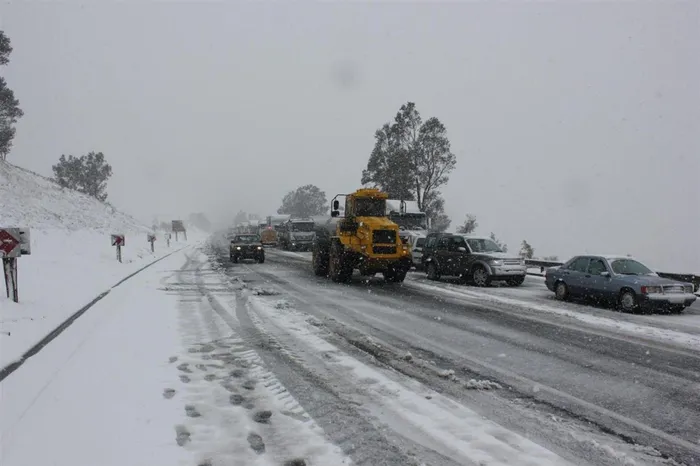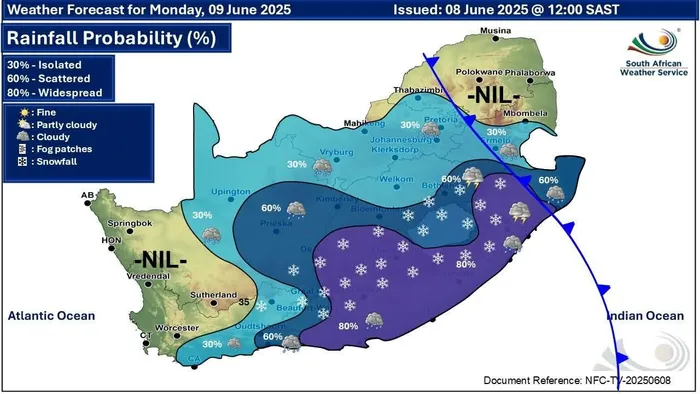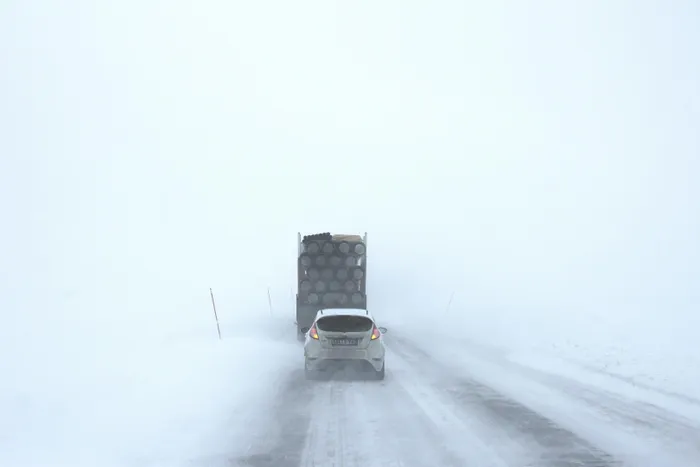What to do if you end up having to drive in snow this week

Snowfall has been forecast for most provinces on Monday and Tuesday.
Image: Supplied / Sanral
And just like that, winter has arrived.
The South African Weather Service (SAWS) has forecast snowfall for large parts of South Africa on Monday and Tuesday as a cold front makes its way through the country.
The intense cut-off low system is expected to persist until at least Wednesday, and could bring snowfall to every province except Limpopo, with mountainous areas particularly at risk.

Snow forecast for Monday, June 9.
Image: SAWS
Disruptive snowfall remains a distinct possibility on busy mountain passes early this week, including the N3 highway at Van Reenen’s.
But what should you do if you’re caught in these conditions?
According to Arrive Alive, the key is to drive slowly and smoothly on slippery surfaces.
“Start Gently and Slowly. When first starting, get the feel of the road. Don't hurry,” the organisation advises.
Other important tips to keep in mind:
- Make turns as gently as possible
- Keep a longer-than-usual following distance.
- Don't brake any harder than necessary.
- Do not brake in corners
- Avoid overtaking as far as possible.
- Don’t drive alongside other vehicles for longer than necessary.
- Try to anticipate stops early and slow down gradually.
Also keep in mind that accelerating up a hill can cause skidding, so it’s best to gain some speed before the hill and slow down when you reach the top.
What happens if you lose traction and start to spin?
Eugene Herbert, CEO of advanced driving school MasterDrive, advised motorists caught in this situation to stop accelerating and let the car slow down naturally.
“Do not brake as it will extend the skid. If you start spinning, steer in the direction of the spin until it is safe to straighten. Do not slam on your brakes,” Herbert added.
MasterDrive also urges motorists to be on the lookout for black ice, which forms when sleet or rain freezes as it hits the ground.
It can be very difficult to see, although it looks like glossy, slightly wet patches on the road.
When caught out by black ice, it’s important to avoid hitting the brakes. Rather lift your foot off the accelerator and focus on keeping the steering straight.

Don't be like this Fiesta driver. Drive smoothly and keep a longer following distance.
Image: Remi Jacquaint / Unsplash
A proactive approach can also help you to avoid being caught in a precarious situation on the road.
This includes checking that your tyres are properly inflated and adequately treaded, before you hit the road and ensuring that your anti-freeze is adequately topped up.
It’s also important to ensure that your defrosting and heating equipment is in good working order, Arrive Alive advises, as well as your wipers, washers and headlights.
When caught in snow, and if there are no other cars around you, it’s also advisable to gently test your brakes to judge how slippery the road is, MasterDrive adds.
IOL
Related Topics: